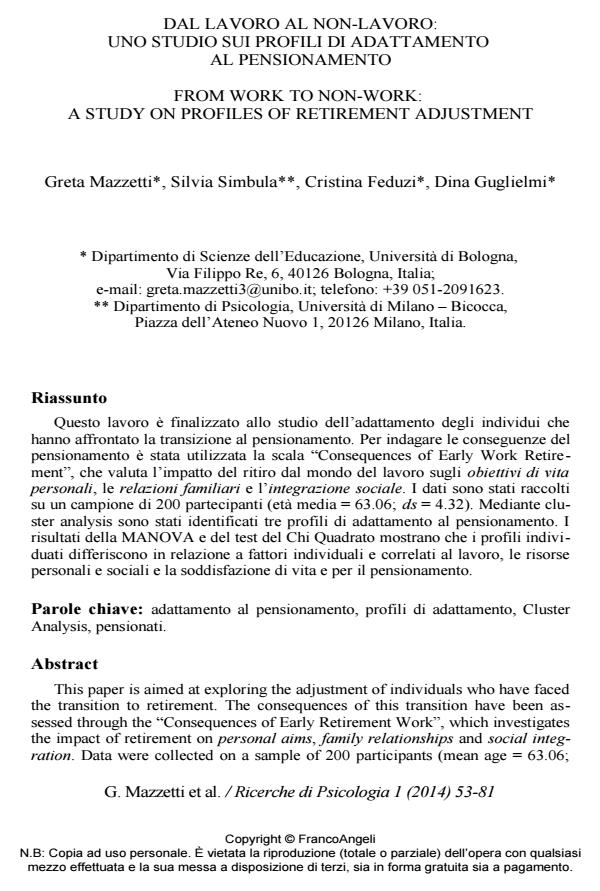From work to non-work: a study on profiles of retirement adjustment
Journal title RICERCHE DI PSICOLOGIA
Author/s Greta Mazzetti, Silvia Simbula, Cristina Feduzi, Dina Guglielmi
Publishing Year 2014 Issue 2014/1
Language Italian Pages 29 P. 53-81 File size 309 KB
DOI 10.3280/RIP2014-001003
DOI is like a bar code for intellectual property: to have more infomation
click here
Below, you can see the article first page
If you want to buy this article in PDF format, you can do it, following the instructions to buy download credits

FrancoAngeli is member of Publishers International Linking Association, Inc (PILA), a not-for-profit association which run the CrossRef service enabling links to and from online scholarly content.
This paper is aimed at exploring the adjustment of individuals who have faced the transition to retirement. The consequences of this transition have been assessed through the "Consequences of Early Retirement Work", which investigates the impact of retirement on personal aims, family relationships and social integration. Data were collected on a sample of 200 participants (mean age = 63.06; SD = 4.32). Using a cluster analysis, three profiles of retirement adjustment have been identified. The results of MANOVA and Chi Square Test indicated that these profiles show significant differences concerning individual and work related factors, personal and social resources, life satisfaction and retirement satisfaction.
Keywords: Retirement adjustment, retirement profiles, Cluster Analysis, retirees.
Greta Mazzetti, Silvia Simbula, Cristina Feduzi, Dina Guglielmi, Dal lavoro al non-lavoro: uno studio sui profili di adattamento al pensionamento in "RICERCHE DI PSICOLOGIA " 1/2014, pp 53-81, DOI: 10.3280/RIP2014-001003